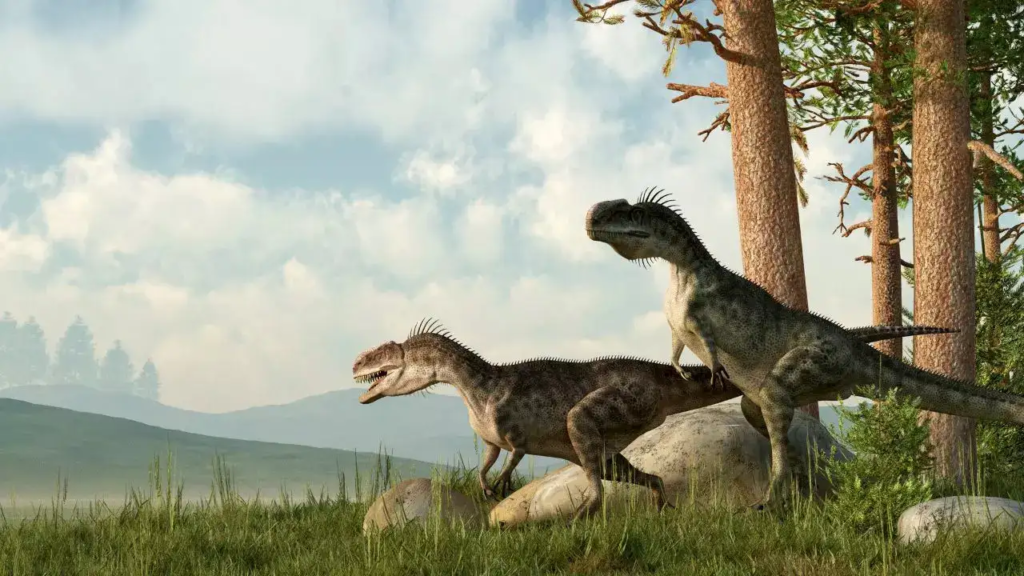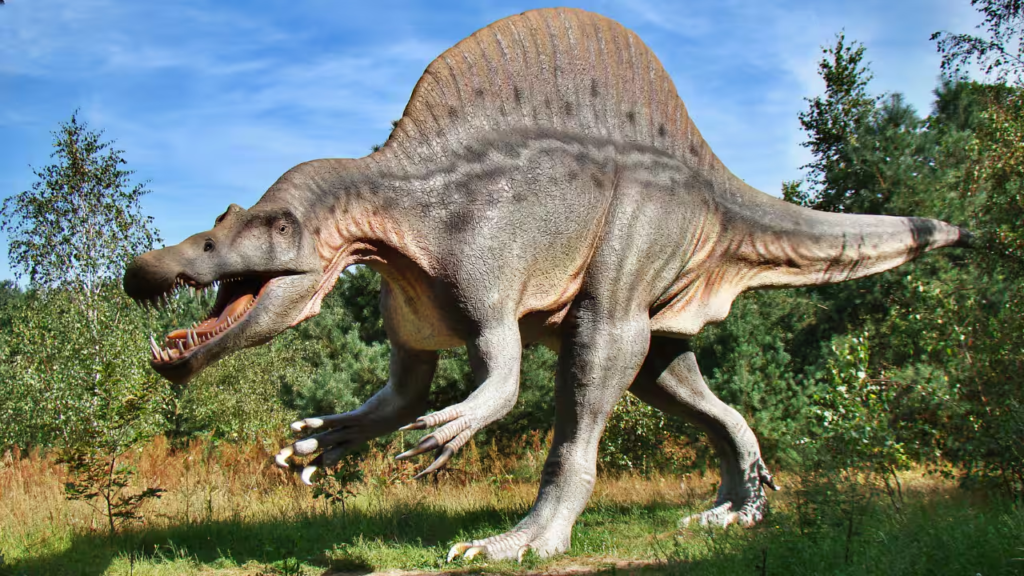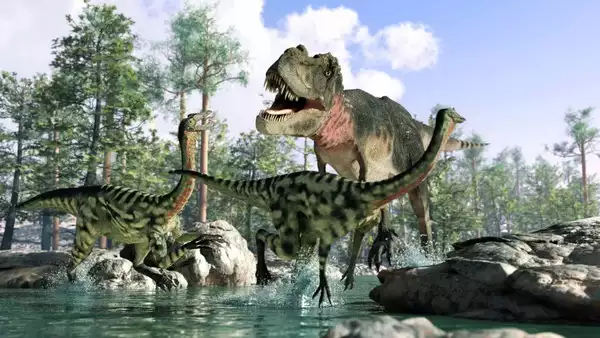In a remarkable discovery that has captured the imagination of scientists and dinosaur enthusiasts alike,Highway Prehistoric a vast collection of 166-million-year-old dinosaur footprints has been uncovered in a quarry in Oxfordshire, England. Dubbed the “dinosaur highway,” this extraordinary find offers a rare glimpse into the lives of prehistoric giants that roamed the Earth during the Middle Jurassic Period. While this groundbreaking discovery was made across the Atlantic, its significance resonates deeply with paleontologists and researchers in the United States, where similar trackways have sparked fascination and inspired further exploration into the ancient past. This article delves into the details of the discovery, its scientific importance, and what it means for our understanding of dinosaurs, all while drawing connections to ongoing paleontological efforts in the U.S.

A Chance Discovery in Oxfordshire
The story of the dinosaur highway began in 2023 when quarry worker Gary Johnson noticed unusual bumps while extracting limestone at Dewars Farm Quarry in Oxfordshire. What seemed like ordinary irregularities in the rock turned out to be something far more extraordinary: nearly 200 fossilized footprints forming five massive trackways, some stretching over 150 meters (nearly 500 feet). Researchers from the Universities of Oxford and Birmingham quickly descended on the site, confirming that these tracks, preserved in a limestone floor, date back to the Middle Jurassic Period, approximately 166 million years ago. The discovery has been hailed as one of the most significant dinosaur track sites in the United Kingdom, offering a “snapshot” of a prehistoric world where massive creatures once roamed.
The footprints belong to two distinct dinosaur species: the long-necked, herbivorous sauropod, likely Cetiosaurus, and the carnivorous theropod Megalosaurus. Cetiosaurus, a cousin of the well-known Diplodocus, could grow up to 18 meters (59 feet) in length, leaving behind tracks as large as 90 centimeters (35 inches). Megalosaurus, a fierce 9-meter-long (30-foot) predator with distinctive three-toed footprints, was the first dinosaur ever scientifically described in 1824. The crossing of their tracks at one point in the quarry has sparked curiosity about potential interactions between these herbivores and carnivores, offering a tantalizing glimpse into their behavior and environment.
Why the “Dinosaur Highway” Matters
The term “dinosaur highway” captures the scale and significance of this find. The trackways suggest that these dinosaurs were not wandering aimlessly but may have been traveling in groups, possibly herding or following established paths. The arrangement of the tracks indicates social behavior, with sauropods of varying sizes—potentially a herd—leaving their mark in what was once a muddy, lagoon-like environment similar to the modern-day Florida Keys. This preservation, caused by soft, wet sediment capturing their steps, offers a rare window into the Jurassic landscape.

For American researchers, this discovery resonates with similar finds in the U.S., such as the Dinosaur Tracksite at Glen Canyon National Recreation Area in Utah, where hundreds of Jurassic-era footprints have been studied. The Oxfordshire tracks provide a comparative dataset, allowing scientists to explore how dinosaurs moved, interacted, and adapted to their environments across different regions of the world. Kirsty Edgar, a professor of micropaleontology at the University of Birmingham, described the site as “the closest we’ll get to a time machine,” emphasizing its ability to reveal details about dinosaur movements and the tropical environment they inhabited.
Connections to American Paleontology
The U.S. has a rich history of dinosaur trackway discoveries, making the Oxfordshire find particularly relevant for American paleontologists. For instance, the Palisades Sill Tracksite in New Jersey preserves footprints from the Late Triassic to Early Jurassic, offering insights into early dinosaur evolution. Similarly, the Dinosaur State Park in Connecticut boasts one of the largest collections of dinosaur tracks in North America, dating back roughly 200 million years. These sites, like the Oxfordshire highway, reveal how dinosaurs navigated their environments and interacted with one another, providing a direct link to the past.
The Oxfordshire discovery also highlights the importance of continued exploration. In the U.S., paleontologists are actively studying trackways to understand dinosaur behavior, such as whether they traveled in groups or alone. The crossing of carnivore and herbivore tracks in Oxfordshire mirrors similar findings in the U.S., such as those at the La Plata Dinosaur Tracksite in Colorado, where overlapping tracks suggest potential predator-prey dynamics. By comparing these sites, researchers can piece together a global picture of dinosaur life, shedding light on how these creatures thrived in diverse ecosystems.
The Science Behind the Tracks
The dinosaur highway’s significance lies not only in its scale but also in the wealth of information it provides. The size, shape, and spacing of the footprints reveal details about the dinosaurs’ size, speed, and movement. For example, sauropod tracks, primarily from their larger hind feet, suggest a slow, deliberate gait, similar to modern elephants. The Megalosaurus tracks, with their three-toed, clawed impressions, indicate a bipedal predator capable of swift movement. One track even shows a stumble, adding a touch of personality to these ancient creatures.
Advanced technologies, such as aerial drone photography conducted in April 2024, have allowed researchers to document the Oxfordshire site with unprecedented detail. This approach mirrors techniques used in the U.S., where drones and 3D modeling are revolutionizing paleontology. For example, at the Moenave Dinosaur Tracks in Arizona, researchers use similar methods to map and analyze trackways, preserving data for future study. The Oxfordshire team’s work, involving around 100 volunteers over a week in June 2024, underscores the collaborative nature of such discoveries, a practice common in American excavations as well.

What’s Next for the Dinosaur Highway?
The Oxfordshire find is just the beginning. Researchers believe the trackways may extend beyond the excavated area, suggesting that Dewars Farm Quarry could be part of a much larger dinosaur highway. This possibility has sparked excitement among paleontologists, who plan to continue investigating the site to uncover additional footprints and environmental clues. The discovery also coincides with the 200th anniversary of Megalosaurus being scientifically described, adding historical significance to the find.
In the U.S., this discovery is likely to inspire renewed interest in exploring similar sites. Paleontologists at institutions like the Smithsonian’s National Museum of Natural History are already drawing parallels between the Oxfordshire tracks and those found in North America. The data from England could help refine models of dinosaur migration and behavior, contributing to ongoing research in states like Utah, Colorado, and Connecticut. As Richard Butler, a paleobiologist at the University of Birmingham, noted, the tracks’ preservation offers a unique opportunity to study the environment and interactions of these ancient creatures.
A Glimpse into a Lost World
The dinosaur highway at Dewars Farm Quarry is more than a collection of footprints; it’s a portal to a time when massive reptiles ruled the Earth. For Americans, this discovery serves as a reminder of the shared prehistoric heritage that connects continents. The tracks tell a story of movement, survival, and interaction in a tropical world millions of years removed from our own. They also highlight the serendipity of science—how a quarry worker’s curiosity can lead to a find that reshapes our understanding of the past.
As researchers continue to study the Oxfordshire tracks, their findings will undoubtedly influence paleontological work in the U.S. and beyond. Whether you’re a scientist, a student, or simply someone fascinated by dinosaurs, the dinosaur highway invites us all to imagine a world where giants left their mark—literally and figuratively—on the Earth.
Best For You :- Lead Pollution in Ancient Rome May Have Lowered Average IQ, New Study Suggests






